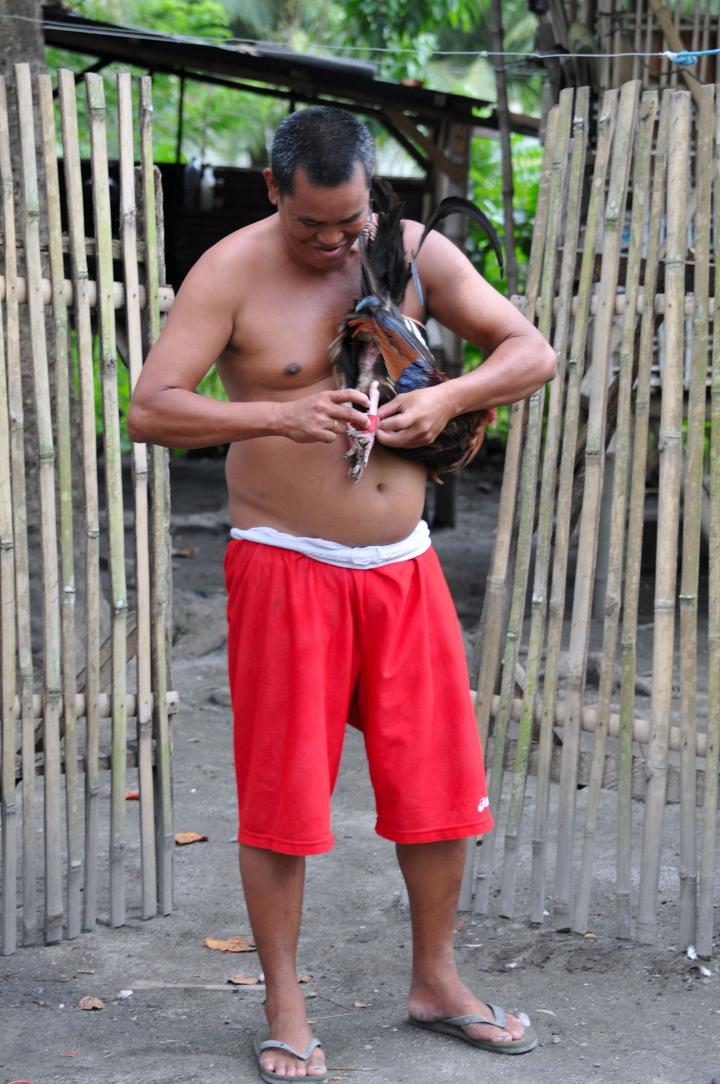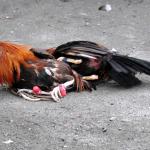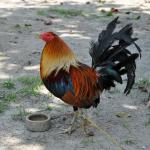Sabong, “The Sport of Kings”
It’s late Sunday morning, the church mass has ended, and small groups of men still flock to the New Alkor Gallera in Koronadal City. The first fight is just about to start; a cacophony of human voices and different sounds is coming from inside the building. A tobacco chewing local holds a microphone in his hand, he is uttering unintelligible words and the impenetrable crowd is shouting, cheering, waving and applauding. The participants and spectators are excited about the upcoming fight, gambling is prevalent during matches and, sometimes, heavy bets are placed on their favourite fighter.
Animal sympathetics beware, this cockfighting arena still practices Sabong, an organized fight between two roosters, after basketball, the second most popular sport in the country; it is a favourite past time for many Filipinos and deeply entrenched into the mainstream of the Filipino culture. Cockfighting has been around for centuries, nowadays it is one of the traditional betting games in the Philippines, and millions of pesos are won and lost every Sunday throughout the nation. Every contest is judged by a referee, the ‘sentensyador’, his ruling is definite and an appeal to his decision is not possible. Another important role in the game is assigned to the person who is holding the bets, often referred to as “Kristo”, coming from the word “Christ”. He is spreading his arms when taking bets and is supposed to be as honest like Jesus; trust is a sacred virtue in Sabong. This kind of “bookkeeper” is capable of memorizing the bets by head without keeping notes on paper.
Fights (Pintakasi) are held in a cockpit arena, a sabungan, the centre of this square theatre has a dirt floor that is littered with feathers, at this spot roosters will fight each other like Roman gladiators. The natural spurs of the roosters are sawed off and replaced with taris, two inch long, thin razor sharp blades or slashers that can inflict nasty wounds on its opponent. The bloody match itself only last a few minutes and most fights are to the death, but in some cases the cocks may suffer severe injuries. The owner of the defeated bird cuts of the feet of the chicken, where the knifes were attached, and gives them to the proud conqueror. Even the winner often ends up with the same fate as the loser, being cooked in a, very tasteful, local dish appropriately named; talunan, meaning defeated chicken. Bitaw or “spar” is a less painful variation of Sabong, a match to prepare the cock for a real Sabong fight; gloves or balls of leather are placed on the rooster’s spurs to prevent the animals from injuring each other.
Except for some vendors there are no women inside the Gallera, it seems cockfighting is for men only; it is obvious that for some men the rooster is more or less an extension of themselves. In the sabungan there is an enjoyable, sporting atmosphere, tensed with emotion and anticipation, the event is regarded as an equalizer. The rich and poor can mingle with one another without class difference; it is relaxation for people coming from all walks of life. It is considered as a form of recreation to relieve the stress of daily routines and for some a way of earning fast and easy money. For the onlookers and contestants, sabungeros, it is an exhilarating day out; cockfights can last till early in the evening. Sabong is practiced all over the island of Mindanao and very popular in rural communities.
The roosters are particularly bred to fight and trained for aggressiveness, exceptional strength and increased endurance. It is an expensive enterprise; the owner of a rooster can spend thousands of pesos for training, vitamins and additives to keep the bird into its best fighting form. The competitions are also a source of income for many traders, handlers and game fowl breeders, inside and outside the gallera vendors are selling cold beverages, sweet cakes, cigarettes and snacks. It is a cottage industry and big business to various villages in Mindanao, there are thousands of privately owned cock farms all over the island.
In the Philippines cockfighting is legal, regulated by the government and bound to rules and permits, matches take place every weekend and during fiestas, but illegal fights, Tupada or Tigbakay, are held almost daily in backyards, barns, vacant lots and open fields. Cockfighting is always surrounded with much criticism and will remain a controversial issue, for some it means cruelty, for others it is culture. It is considered as a heinous, extremely brutal and bloody form of sport by animal rights activists, but for many it is a crowd-pleasing game that is raising passions, it is a sport widely appreciated by the local population all over Mindanao. Some lawmakers even want to declare cockfighting as part of the country's national cultural heritage. Sabong is often named the "sport of kings" for the rich people; wealth is made and wasted on these fighting roosters. It is an opportunity for the poor to dream about that one day their game cock will win the match and pull them out of poverty.
For both the fortunate and the underprivileged cockfighting is a way of life and an inseparable part of their history and tradition.
.
 ThingsAsian
ThingsAsian



















